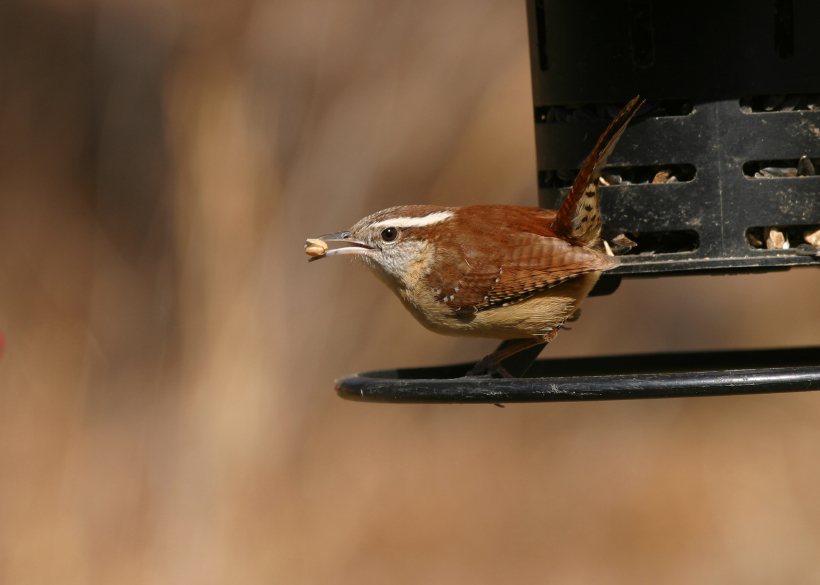Thryothorus ludovicianus
Wrens choose the most unlikely spots to build a nest and raise a family: garages, porches, garden sheds, flower pots, mailboxes, and old shoes to name a few. House Wrens and Carolina Wrens will substitute these locations for more natural tree cavities. House Wrens are summer-only visitors in the northeast and are insectivores exclusively. Carolina Wrens, on the other hand, spend the year-round in and about our properties. When insects are active and plentiful, they are their preferred food. During the colder months they readily come to seed feeders and suet baskets.

Carolina Wren
Historically, Carolina Wrens were found in the southeastern states. As climate has warmed and winters have become milder, they have expanded their range farther into the northeast. During periods of heavy snow, cold, or ice, Carolina Wrens have benefited from the presence of backyard feeders. If the weather pattern persists, however, the northernmost pioneers may not survive. Within a few years, the population continues its northward creep. As this gradual shift in range occurs, more of us in the northeastern states have the joy of hearing the loud, “tee-kettle, tee-kettle, tee-kettle” song of the Carolina Wren. The song tells you a male is in the neighborhood defining and defending a territory for himself and his mate. While both sexes have identical plumage, see one singing and you know you are viewing the male.
The standout feature of the Carolina Wren is its crisp, white stripe over the eye and extending to the back of the head. Look closely and you may see a narrow black line just above white stripe. Wings, back, and tail are a bright rusty brown with subtle barring. The feathers of the underside of the bird are a paler cinnamon color. This energetic little bird often poses with its tail angled sharply upward. Notice that the thin, pointed bill of the wren curves in a gentle arc downward.
During summer months you may spot your Carolina Wren foraging for spiders and insects as it searches tree branches and trunks. Its behavior may remind you of that of nuthatches and creepers. When it is time to supplement its diet with seeds, Carolina Wrens are attracted to mixes containing high percentages of nutmeats. Aspen Song® Chickadee, Woodpecker, and Just Desserts® are ideal offerings.
Reference
Haggerty, Thomas M. and Eugene S. Morton. 1995. Carolina Wren (Thryothorus ludovicianus), The Birds of North America Online (A. Poole, Ed.). Ithaca: Cornell Lab of Ornithology.